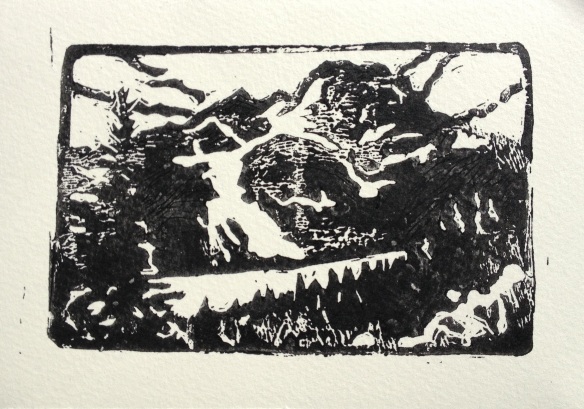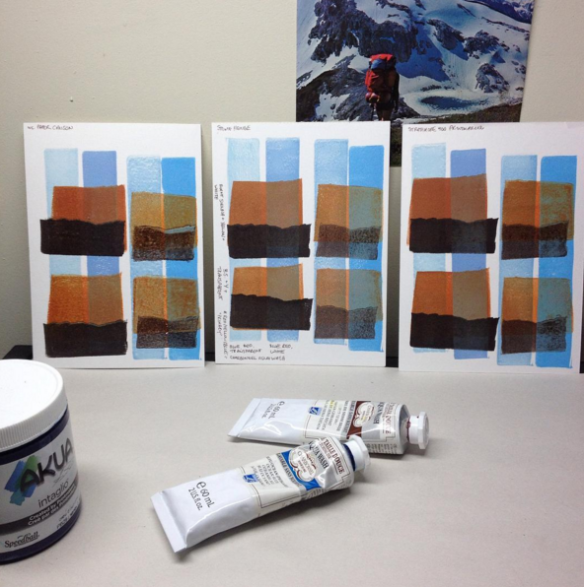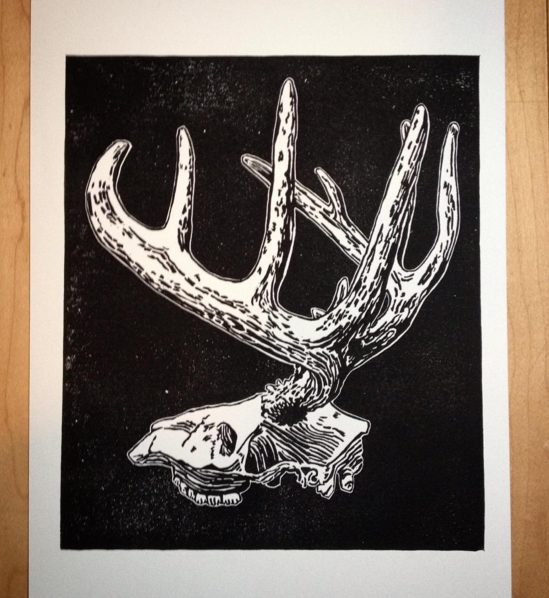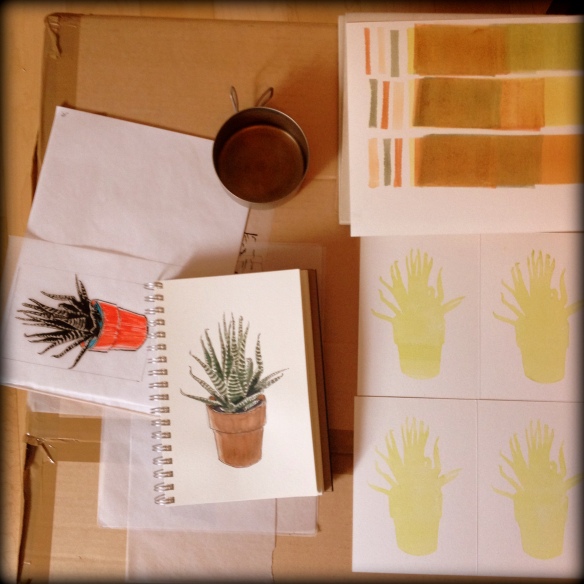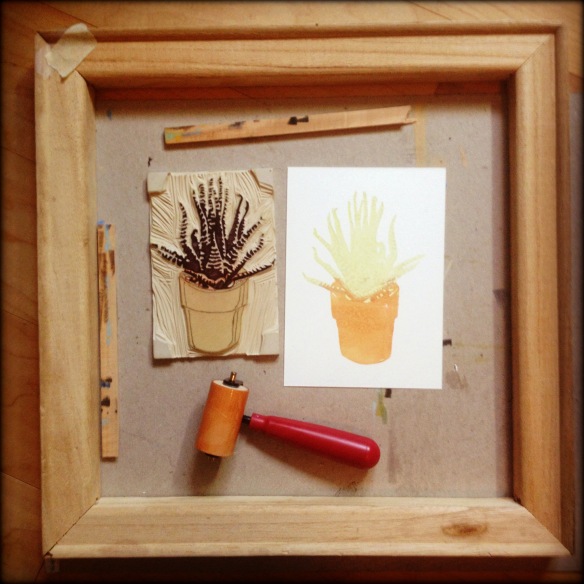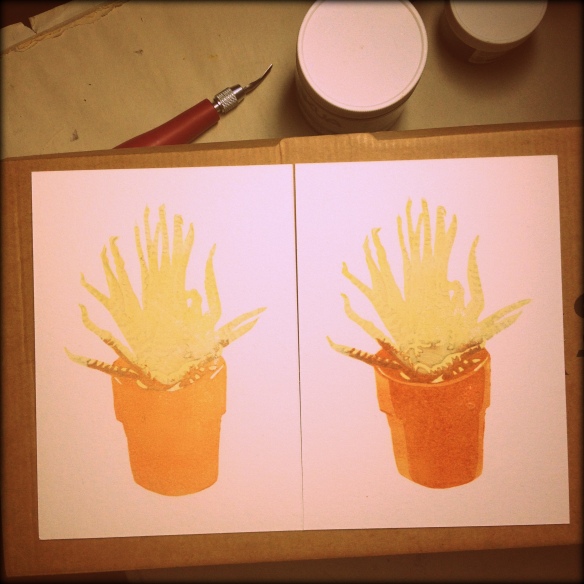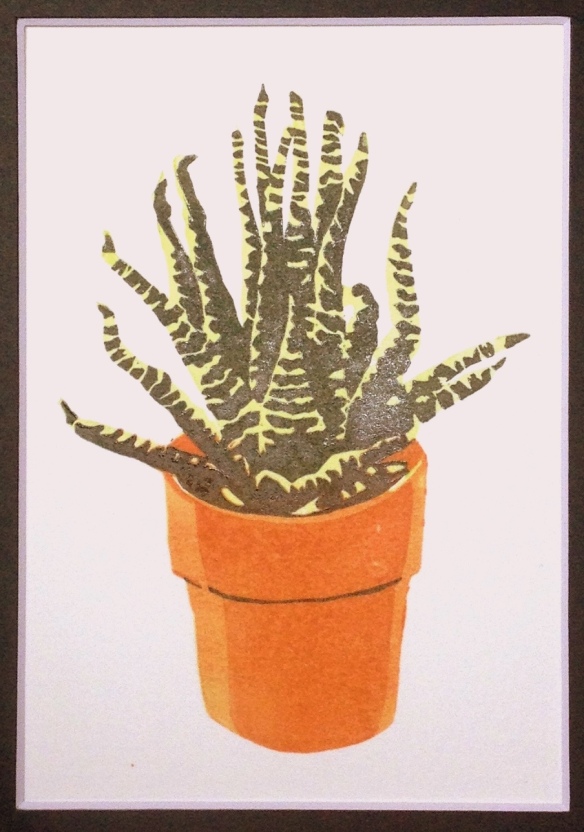Isn’t it fun to see how artists create their work? I always love when artists show just how they create their beautiful pieces. It usually gives me a much deeper appreciation for the high degree of care they put into their work. Linda Cote is a great example, I’ve learned so much from her posts.
The print I’m showing below is evolving right now, in my studio, so you are watching as it comes together! The final print will be on 9×12 inch paper.
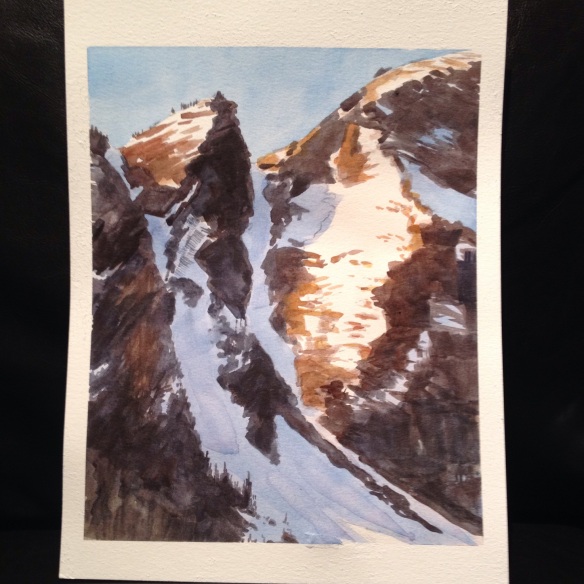
Watercolour sketch about to be turned into a linocut print
First, I create a sketch with watercolour. This one is based on a photo I took while backpacking in Olympic National Park. I love the design, so I’m confident enough to invest the many hours it will take to create the final print.
At this point, I create a more tightly rendered version of the drawing, showing each layer exactly as I will cut them. The photo below shows this drawing on the left, and stage 1 of the print on the right.
For the blue layer, I trace this drawing carefully in pencil, marking each place where I want blue ink to show. I then flip this paper over onto my rubber block and rub it with the back of a spoon until the drawing is transferred to the block. It’s ok if my blue layer overlaps the dark layer a bit, because the dark will go on top.
I then carve away all of the areas where I don’t want blue pigment. This takes many hours for a complex print. I love this part – carving deep grooves into the rubber, following the curves of the mountain with my knife – this effort makes me feel deeply connected to both the landscape and the final print.
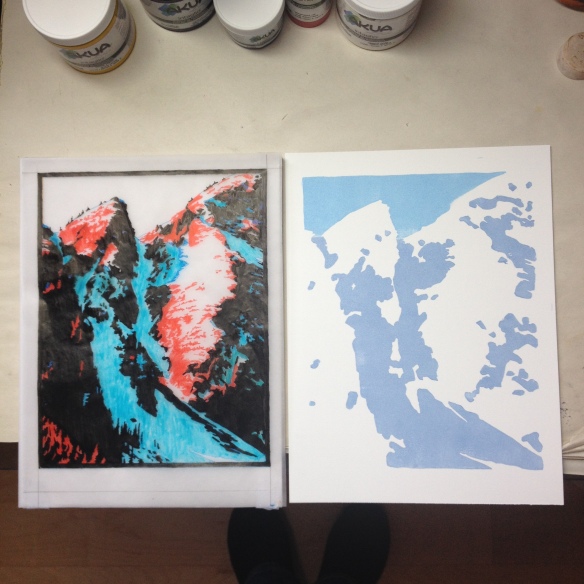
Drawing on the left, print in progress on the right
Next, I mix my inks. I use Akua water soluble inks. These are environmentally friendly soy based inks that clean up with water – no need to use solvents. They also do not contain toxic pigments like cadmium (heavy metal found in oil and acrylic paints), which is great, because I’m absentminded and sometimes end up with ink where it doesn’t belong.
For my blue layer, I’d like a paler, more intense blue for the sky, and a warmer, darker, more purple blue for the snow in the shadows.
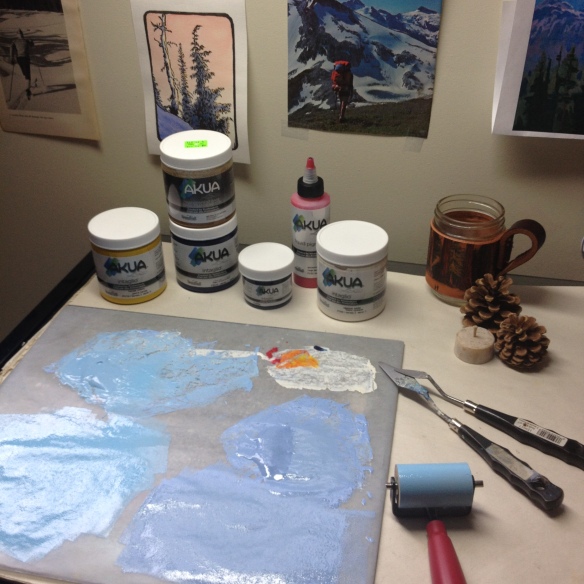
Mixing up just the right shades of blue
Next, I roll the ink out onto my block using a brayer (the thing that looks like a mini paint roller). The photo below shows the inked up block, ready for printing.
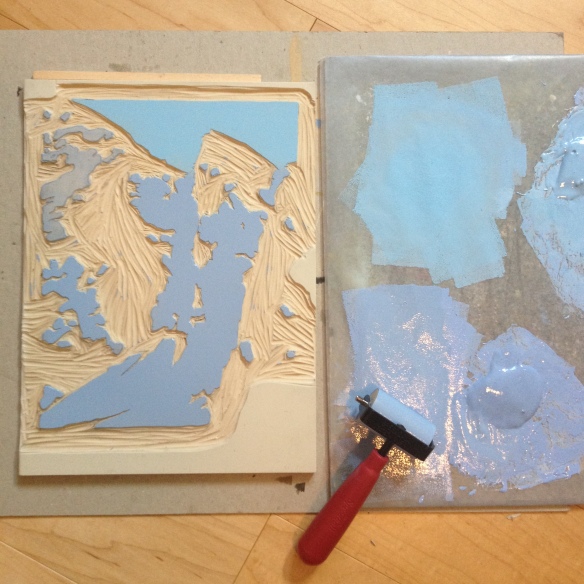
Rolling the ink onto the block
Now, I carefully lay my paper face down onto the inked block. Because I will have three separate blocks, it’s very important that I line everything up exactly right. I use a frame from an old canvas. I place the small block of wood on top of everything, and stand on it! I then move it around, so that I’ve stood on top of the whole print, ensuring an even transfer of ink to the paper.
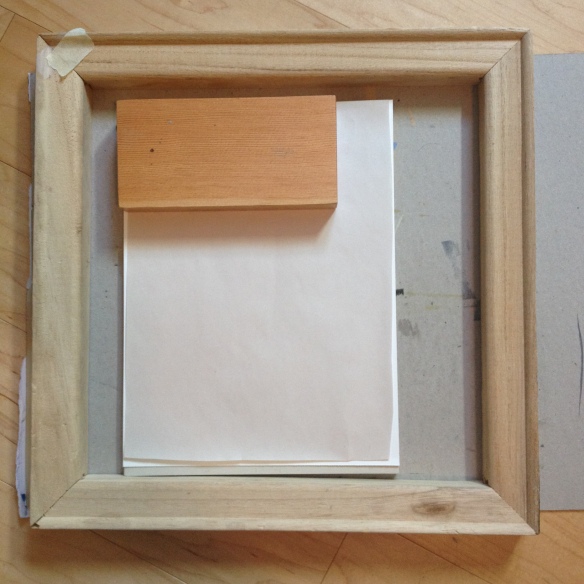
Pressing the paper into the inked block
After this is complete, I carefully peel the paper off of the block, revealing the print. This is a thrilling part of the process- I get to see if it worked! At this point, I make any final adjustments to the block and ink colour, and continue printing multiple copies.
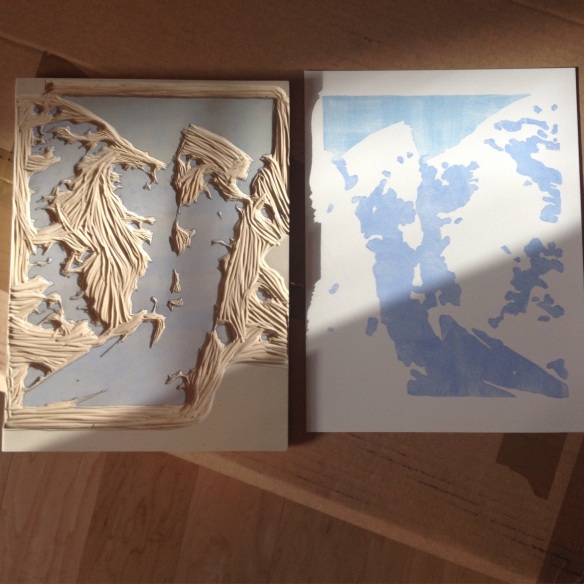
Print after it has been pulled off of the block
So there it is – my process for creating linocut prints.
This one has two detailed layers to come. Click here for Part 2!

